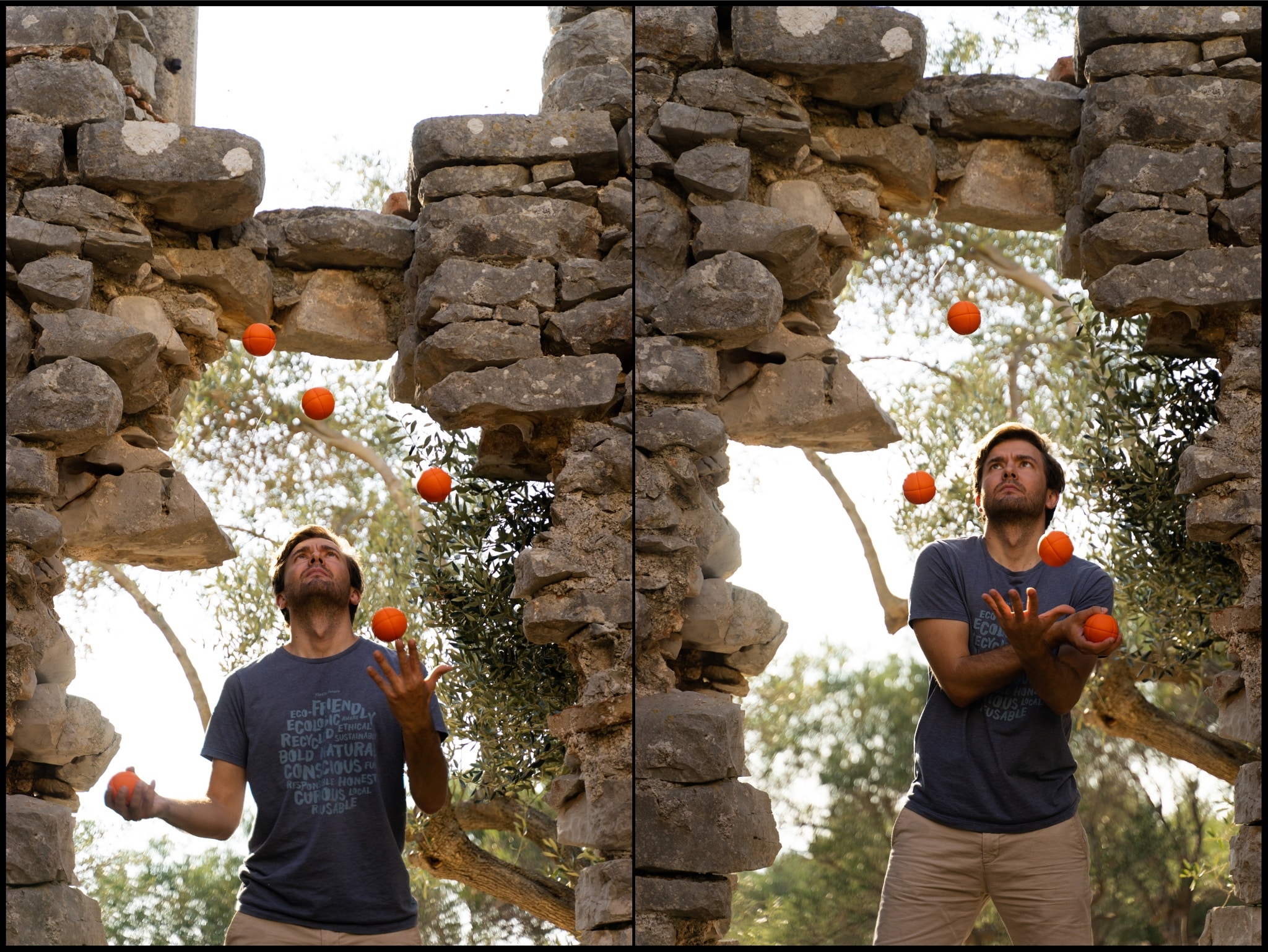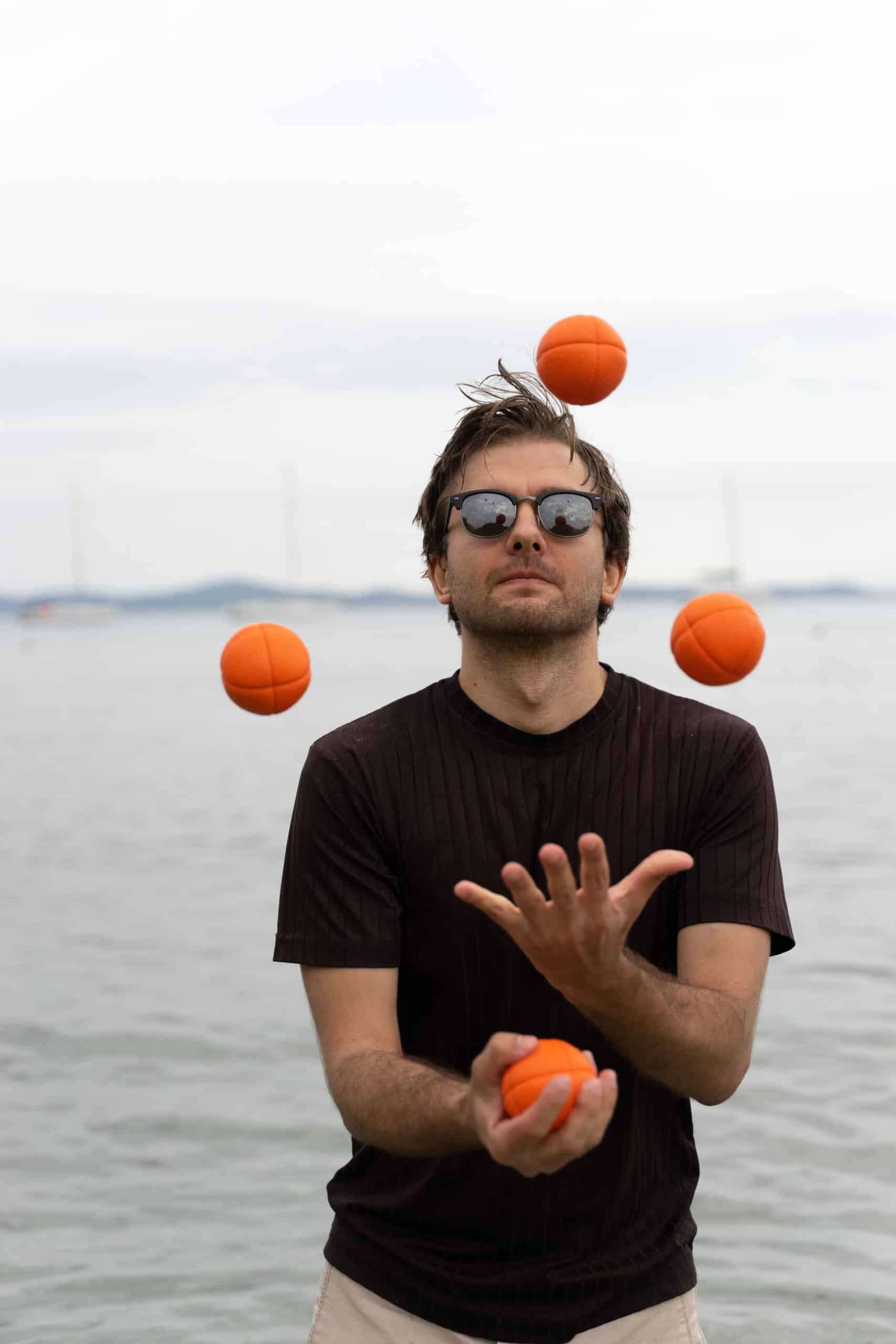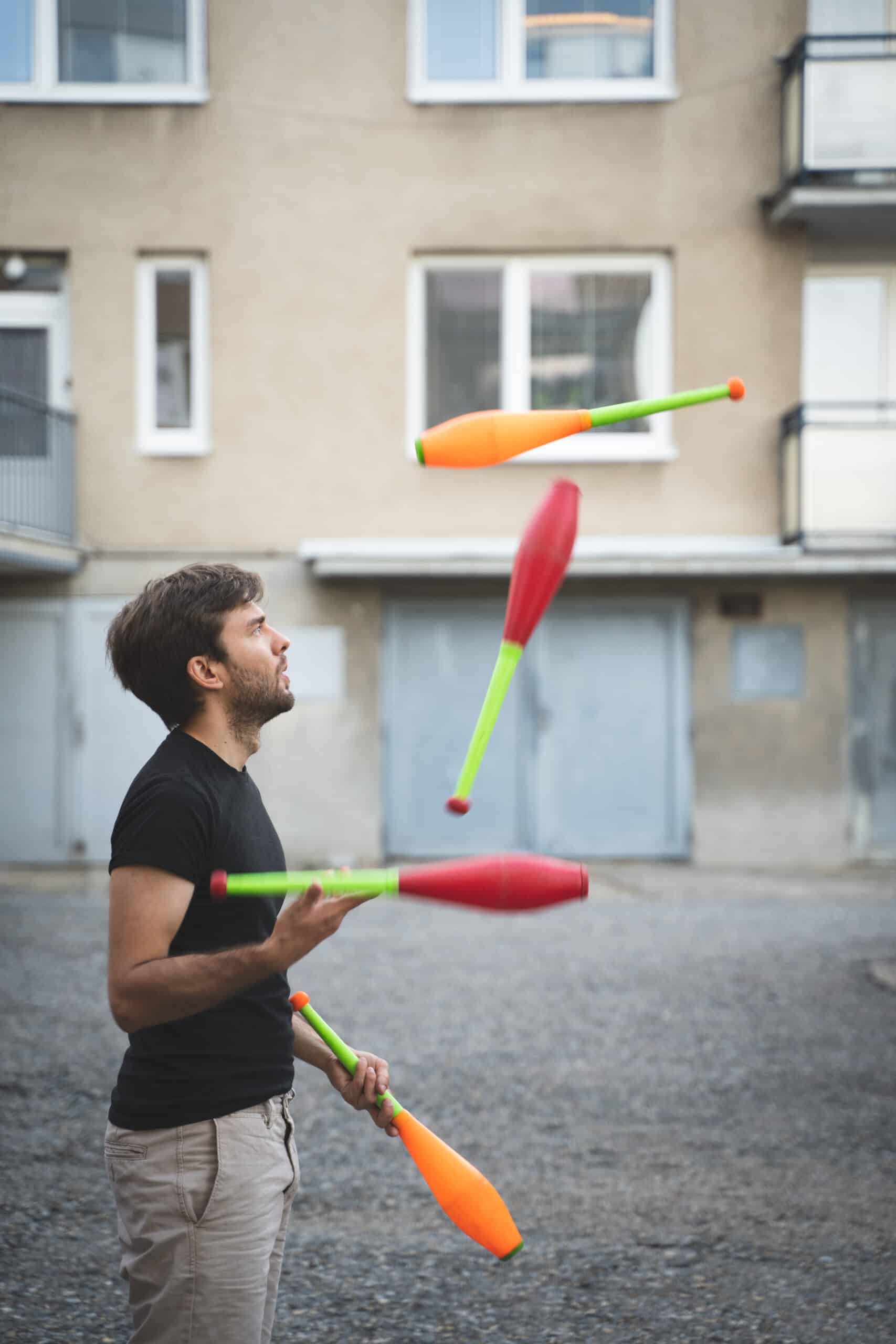Portraiture in Motion: Demonstration with Juggling

Juggling is a combination of sport, dance, and art. It requires practice, patience, extreme concentration, creativity, and good fitness. Portraying a juggler’s performance in a way that captures the viewers’ attention in a photo is a challenge. Are you ready to give it a try?
Taking portraits of jugglers is not only a challenge, but simultaneously an exercise in playful portraiture, motion photography, creativity, and communication. Our suggestions will come in handy when shooting any other type of portraiture in motion. Even if it is your grandmother knitting a sweater.
Getting to know your subject
Just like with any other sport or performance, you need to be familiar with the activity itself: What are its defining moments? What does a proper performance look like? What is considered a misstep in the particular sport/activity? You certainly don’t want to embarrass yourself or your subject in front of their peers by not being familiar with the craft. So before you even get started shooting, let the performer explain what is going to happen.
During this stage of preparation, you can also think about what setting is best for photographing a particular trick. You simply can’t capture a seven ball cascade with balls flying several meters high in the air in a phone booth. Also, give some thought to the lens and camera settings you’ll need.

In the photographs above, you see a classic five ball cascade. I asked the juggler to wear a neutral black t-shirt that wouldn’t take attention away from the bright orange balls. From the juggler’s point of view, it’s best to have four balls in the air and one in the hand, or another ball just landing in the other hand. In a classic cascade, he should not have his arms outstretched nor should he catch the ball away from his body. In the photo on the right, you see the side view. The more evenly the balls are spaced over each other, the better the result.
When the photo is bursting with color
Jugglers often wear bold colors. The performers can better catch the eye of their audience members, sometimes literally, with their bold colors. For you as the photographer, it’s another thing to think about. Don’t even think of giving the juggler different balls unless you want a lecture about the perfect balance between ball weight and size. Practically speaking, this means you’ll have to choose a location for the photoshoot that won’t compete with the balls for attention and talk the juggler out of any loud clothing, like a yellow t-shirt with red writing from his last juggling event.
Aside from pure white backgrounds that are tall, such as church walls, it’s difficult to give a broad suggestion for where to shoot, since it always depends on the color of the balls. For the right combination of colors, take a look at the color wheel. This will tell you which colors go together, which are complementary, and how to achieve color harmony.
Large nostrils and other details
Good communication is key when working with performers. If you don’t prepare the juggler beforehand and tell them to make eye contact with you or stop frowning during a moment of great concentration, the balls will probably end up hitting you in the head. Just as the juggler shared the specifics of juggling with you, be sure to go over what you as a photographer need from them.
First and foremost: A natural facial expression. When people are trying to focus on something, they don’t think about what they look like. Ask your model to keep a neutral facial expression or even smile. At the very least, ask them to keep their tongue behind their teeth. Ideally, you’ll be able to capture a determined sparkle in their eye.
Secondly: Have them tilt their head as little as possible. There is a simple rule when photographing jugglers – the more they tilt their head, the more their nostrils take over their face. Naturally, they can’t look directly into the camera, but they don’t have to tilt their head back so dramatically. Another option is to photograph the model from above or change the camera angle.


Thirdly: Eye contact. Who wouldn’t want an athlete or performer to make eye contact with them at the peak of their performance? You will have plenty of chances to get a shot of the juggler throwing the balls, but there may only be one, brief look at you during an entire performance. An alternative can be to ask your model to wear sunglasses.

Spicing up the photo
Juggling is perfect for video, but tricky for photography. The juggler’s performance as a whole is breathtaking, but a photograph can only capture a single moment. In order for your image to be compelling, you cannot focus on the act of juggling alone. Look around for interesting settings that will make your photo unique, such as an abandoned building or otherwise unique locations. Pay attention to the lines and contours of the architecture that will enhance the performance.


Or, try capturing the more artistic side of juggling, especially if the juggler is also a gifted performer. Photographer Norbi Whitney specializes in this and his Instagram is a gold mine of inspiration.
Camera settings
You now know everything about juggling from A to Z, you’ve found the right location, and you’ve found your juggler. Now, it’s time for you to show what you can do. Since juggling is both a sport and an art, its interpretation is up to you. While movement is not very desired when photographing sporting events, in this type of performance, it can be seen as creative.
I recommend setting your camera to manual mode or shutter priority (S). For more distracting backgrounds when you need to keep a low f-number, opt for manual mode (M). If you want to capture the juggling balls or other juggling props in motion, set the shutter speed to 1/100 seconds and faster. It also depends on the lighting conditions you are shooting in. The juggler’s hands will also move at the same time as the object, so ask them to minimize movements. If you want to freeze movement, shorten the exposure time.


Continuous shooting or burst mode will also come in handy. Three images per second should suffice. I recommend going through the photos with your model, so they can tell you what is good or bad about the photograph from the juggling perspective. You’ll get the hang of it in no time, making photo selection much faster.
Practice, inspiration, and above all, a playful attitude
One thing both photographers and jugglers have in common – to get impressive results you have to practice, be patient, and draw inspiration from others. For simplicity’s sake, I’ve focused on photographing jugglers, but in the world of art, there are countless objects that can be played with to make art. Have fun discovering them.

There are no comments yet.